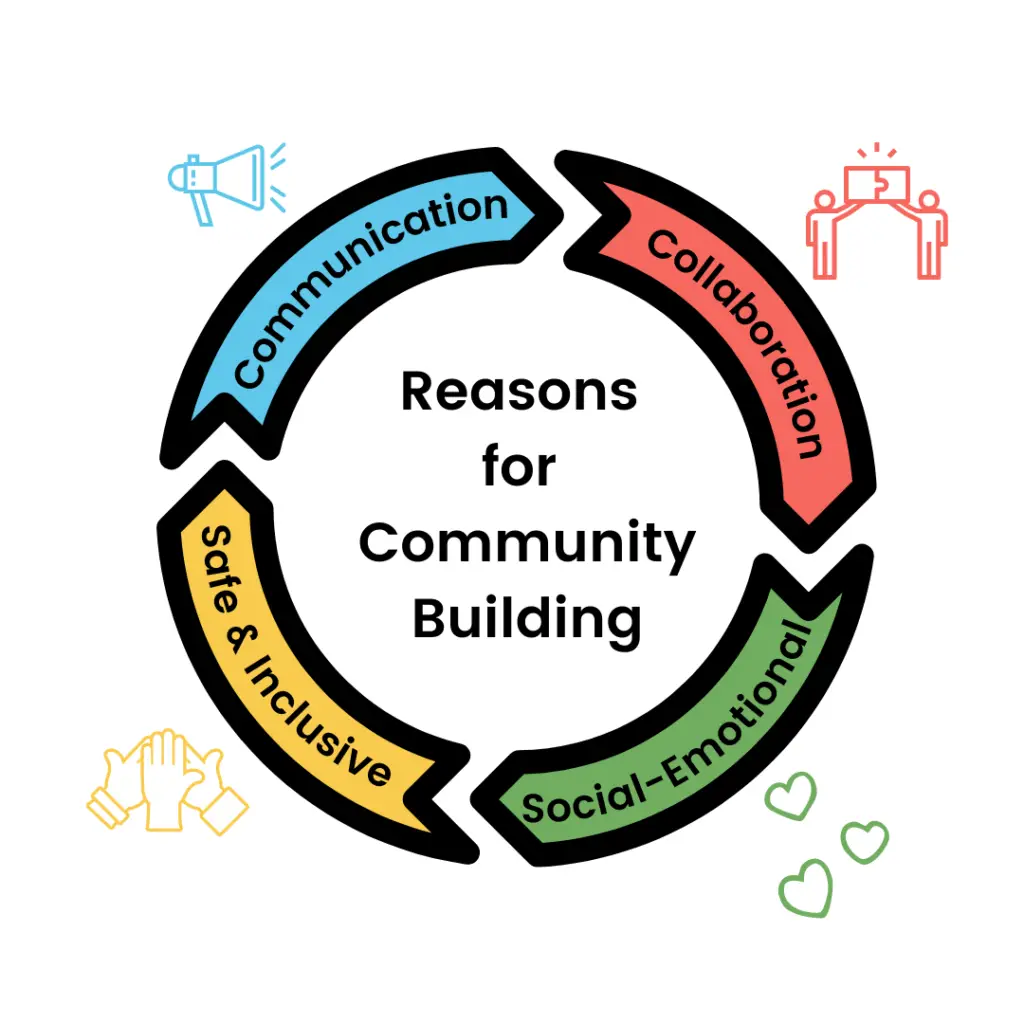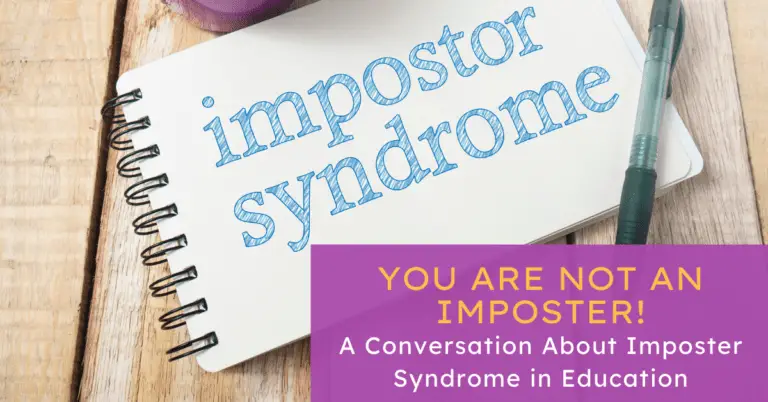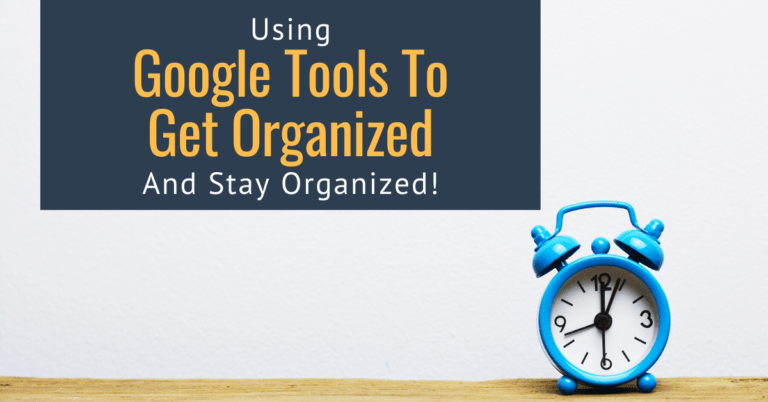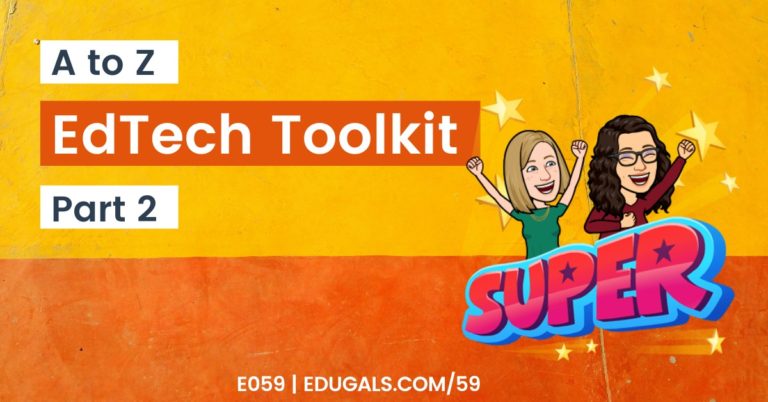In this episode, we are talking all about how to leverage tech tools to build community in your classroom this year. We are going to approach it by starting with the “why” of community building, and then suggest tools from there!
If you like what you hear, then share this episode with a colleague or friend, and make sure you subscribe so that you don’t miss out on any new content! If you are able, consider supporting the show by buying us a coffee!
We would love to hear from you – leave a comment here, OR check out our FLIPGRID!
Show Notes
This week, we are going to talk all about building community in the classroom. We are going to share some ideas, some general tools, and some different ways that you can support building community in the classroom.
We decided to tackle this one because we have all just returned back to the classroom, which makes it the perfect time to build community! Plus, so many of us educators have learned how to use various tech tools throughout the course of the pandemic, and it’s important that we talk about how you can continue to use those tools moving forward.
Last year, we really recognized the importance of building relationships, particularly since we weren’t in person for the whole year, and even when we were, many of us were doing some form of hybrid teaching to keep cohorts smaller. Just because we are mostly back to normal this year, with full classes returning to in-person, community and relationship building is still an important activity to continue this year. These activities will help our students in so many ways.
Plus, who knows how long we will be able to remain in full classes in-person?! Take the time to get to know your students while you can, so that you have built strong relationships in case we end up remote or in hybrid learning.
While it may not seem quite as obvious, it may even be a great idea to consider community building activities for staff! The past year or so has been so strange and isolating, so it’s a good idea to try out some of these activities as a school staff so that stronger connections can be made.
We are going to start today by talking about the reasons why community building is so important, and then we will share some general technology tools that can be used to support those reasons or areas.
Reasons for Community Building

Communication
The first reason why educators should focus on community building communication. Communication isn’t just a conversation; it includes all interactions between a student and their teacher, their peers, and whole group. It also includes in-person and digital, or virtual communication modes, such as email, messaging, etc. A strong classroom community allows students to feel comfortable sharing, speaking and participating in class.
Also, returning to face-to-face after a year and a half for some of our students is not going to be an easy feat for everyone. Socially, we have been removed from in-person conversations and interactions, so it could be extremely challenging for some of our students to get comfortable with the in-person format again.
These community building activities allow students to remember how to interact with others in a classroom. It also allows them to learn more skills that will help them navigate all of the complex relationships and how to communicate with those around them.
Tools that support communication
There are many different tools that support communication and community building.
- Screen/webcam recording tools
- Screencastify, Screencastomatic, Explain Everything, Loom, WeVideo
- Can be used by teacher for: overview videos, responding to questions, demonstrating how to do something,
- Can be used by students for: presentations,
- Being able to see and hear your teacher makes a big difference for many students
- Audio recording tools
- Mote, Vocaroo, voice notes in Read&Write
- Can record audio comments, audio for slides, audio responses for email
- Takes away the guessing game in terms of tone and intent of messages
- Online chat platforms
- Google Chat, Remind, Slack, Discord
- Groups and/or one-on-one real time communication
- Less formal (and lower risk) than email, which is preferred for students
- Allows students to ask for help, or to ask clarifying questions even if we return to remote learning
- Video conferencing tools
- Google Meet, Zoom, Microsoft Teams
- Extra help sessions during lunch or after school
- Easy way to keep yourself accessible to students
- Learning Management Systems (LMS)
- Brightspace, Canvas, Schoology, Google Classroom
- Take advantage of tools such as announcements, news feeds, discussion boards, etc.
Collaboration
There are lots of aspects of the classroom learning environment that call for collaboration, or students working together. This is not going to be very successful if you don’t work on community building throughout your course. When students feel safe, and like they belong, they are far more likely to engage with the class, and with their peers.
Here are some tools that can be used to foster collaboration in the classroom:
- Digital Whiteboards
- Google Jamboard, whiteboard.chat, whiteboard.fi, Microsoft whiteboard
- Can have multiple students working together on a whiteboard
- Activities: Getting to know you, brainstorming, word walls, gathering resources for research, interactive games (Connect 4, Boggle, Pictionary, etc)
- Google Jamboard (and other tools) can now be integrated with Flipgrid!
- Google Slides, Docs, and Sheets
- Empty Docs can be really intimidating, but if you use a template or graphic organizer it becomes much easier for students to work together to complete an activity or assignment
- Can be used to collect data as a class, to crowdsource problem solving (app smash this with a tool like Screencastify!)
Social-Emotional Learning and Safe & Inclusive Environments
We often hear the term social-emotional learning, and we aren’t always sure of what this even means. In the context of education, social-emotional learning refers to students growing up, maturing, and trying to find their place in the world. At the same time, they are also wanting to feel that they belong. A strong classroom community allows students to embrace all parts of their identity, such as culture, language, interests, hobbies, etc., and to develop empathy and understanding for those around them.
A safe and inclusive learning environment is closely tied to to social-emotional learning, and so we are going to group these two reasons or areas together.
A strong classroom community lends itself to the creation of a safe and inclusive environment for our students. Building community amongst the classroom leads to the creation of a shared space of respect and understanding; students feel like they belong, and that they are heard, seen and accepted for who they are. This helps them to feel at ease and safe in your class.
Here are some tools and strategies that we can use to help support social-emotional learning, as well as a safe and inclusive learning environment for your students:
- Use a variety of tools and modes of communication; don’t favour one over others
- Surveying Tools
- Google Forms, Microsoft Forms, Survey Monkey
- Use surveys to gather info about your students (personal, languages they speak, courses they are taking, etc.), class song playlist, and more!
- Check-ins for understanding, how students are feeling, etc.
- Involve students!
- Let them help with the classroom layout, whether it is physical or virtual (LMS)
- Have them design custom banners, as well as the format of content (unit vs week)
- Wellness Activities
- Headspace, Kahoot, Quizizz, Google Arts & Culture Puzzle Party, Jamboard games (do a quick Google search for templates)
- Students can create online quiz activities or choose meditation for the day/week to help you save time
Do you have tools that you recommend to help build community in your classroom? Feel free to share your ideas on our flipgrid, or leave a comment here on our website!





